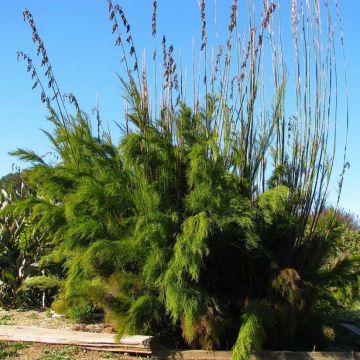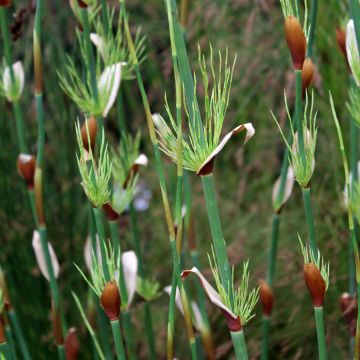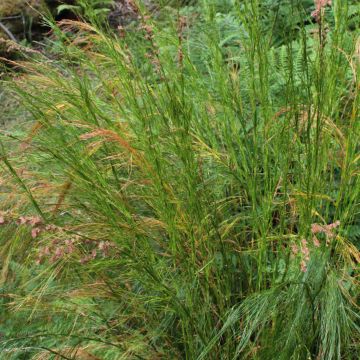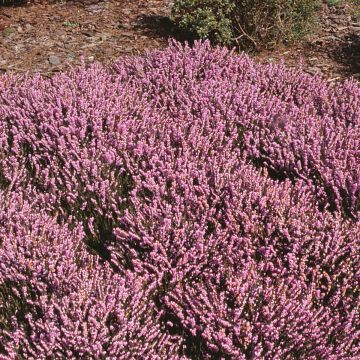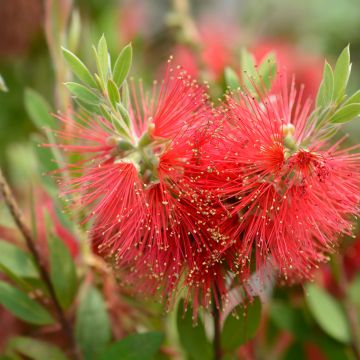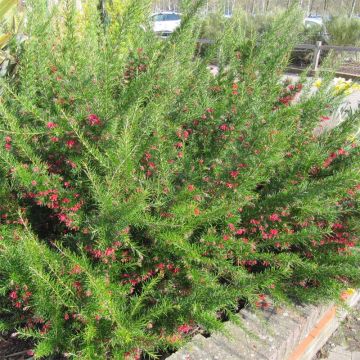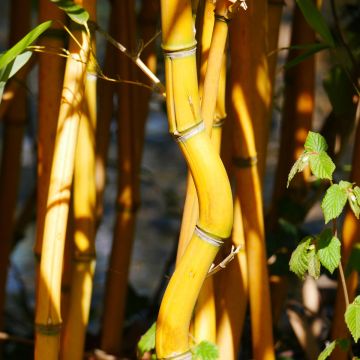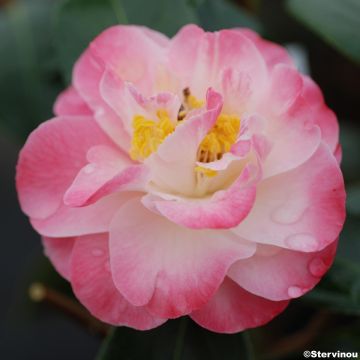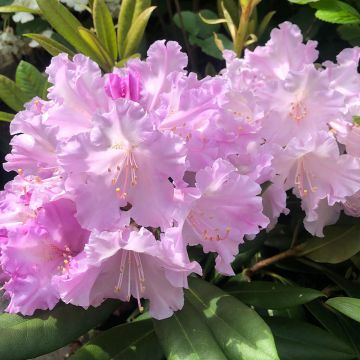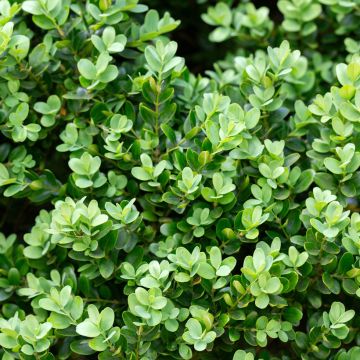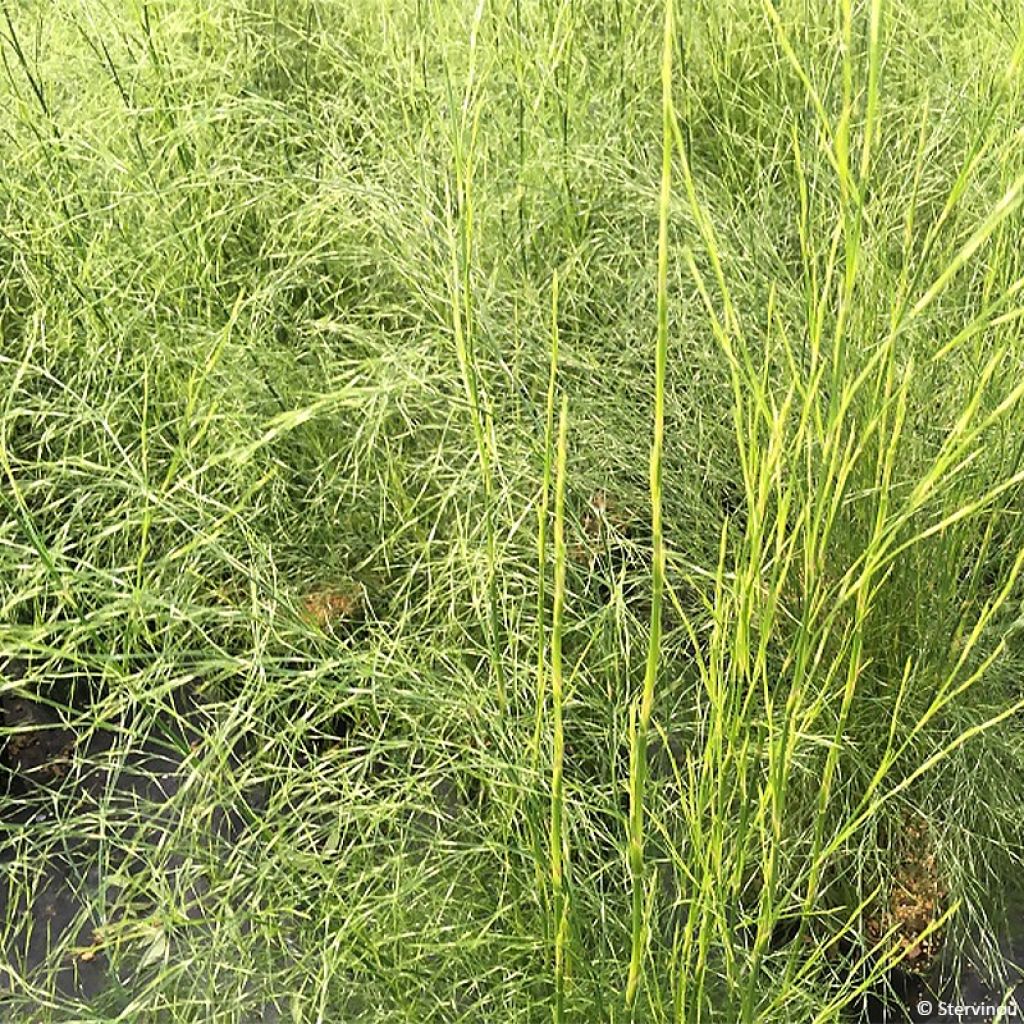

Calopsis paniculata - Restio
Calopsis paniculata - Paniculate restio
Calopsis paniculata
Paniculate restio
Special offer!
Receive a €20 voucher for any order over €90 (excluding delivery costs, credit notes, and plastic-free options)!
1- Add your favorite plants to your cart.
2- Once you have reached €90, confirm your order (you can even choose the delivery date!).
3- As soon as your order is shipped, you will receive an email containing your voucher code, valid for 3 months (90 days).
Your voucher is unique and can only be used once, for any order with a minimum value of €20, excluding delivery costs.
Can be combined with other current offers, non-divisible and non-refundable.
Why not try an alternative variety in stock?
View all →This plant carries a 24 months recovery warranty
More information
We guarantee the quality of our plants for a full growing cycle, and will replace at our expense any plant that fails to recover under normal climatic and planting conditions.
Would this plant suit my garden?
Set up your Plantfit profile →
Description
Calopsis paniculata (synonym Restio paniculatus) is one of the most spectacular among this group of magnificent southern perennials resembling grasses, reeds or bamboo called Restio. It forms a clump, evergreen in winter, that easily exceeds the height of a person. It is composed of stems on which the foliage is replaced by a multitude of very fine branches, giving the plant an incredibly feathery appearance. Dense, flexible, airy, with an intense green colour, it is adorned in summer with fine cream-white inflorescences that turn brown when ripe. Extremely decorative and original, this plant has its place in a wild or contemporary-style garden, in a mild climate. It also looks superb in a large container on the terrace or balcony!
Calopsis paniculata is a plant in the Restionaceae family. It is a South African botanical species, hardy down to a minimum of -8 to -9 °C (17.6 to 15.8 °F) once mature. In its country of origin, it is found in wet, marshy areas, not far from watercourses, in loamy and cool soils, even waterlogged. In colder climates, however, this plant prefers well-drained soils, as its stump fears waterlogged soils frozen in winter.
This tall herbaceous perennial forms a clump of stems emerging from the stump, spreading upwards. It will reach about 2 m (6 ft 7 in) in height and 1 m (3 ft 4 in) in diameter at the base, 2 m (6 ft 7 in) for the crown in open ground warmer climates. The plant develops flexible but robust stems or culms, with brown nodes, like bamboo canes. Along these stems, at regular intervals, at the level of the nodes, there are clusters of feathery branches, gathered in dense whorls. The stems are devoid of true leaves. At the end of each branch, clear inflorescences appear. This plant is dioecious, meaning that there are male and female plants, with the female flowers being more spectacular. Flowering takes place in June-July depending on the climate, in the form of long, slender spikes of cream-white colour in females, pale yellow-green in males, followed by the formation of brown capsules in females. In theory, it is evergreen, but the vegetation will be destroyed by frost. A well-established plant, however, will regrow from the stump in spring.
Calopsis paniculata has a pleasantly exotic silhouette, in the form of large plumes of a very vivid green, which cannot fail to impress anyone who sees it in its natural habitat. In a garden, in favourable climates, it can be planted along a path, at the back of a bed, or on the banks of water features where it appreciates moist soil. It can also be used as a decorative element on the terrace, but should be protected in cold climates. Planted in the ground or in a pot, it always makes a successful combination with the stunning Boronia, bamboo or Nandina, Dierama, Callistemon, or even a Gomphostigma virgatum. Its flowers are attractive in dried bouquets.
Report an error about the product description
Calopsis paniculata - Paniculate restio in pictures
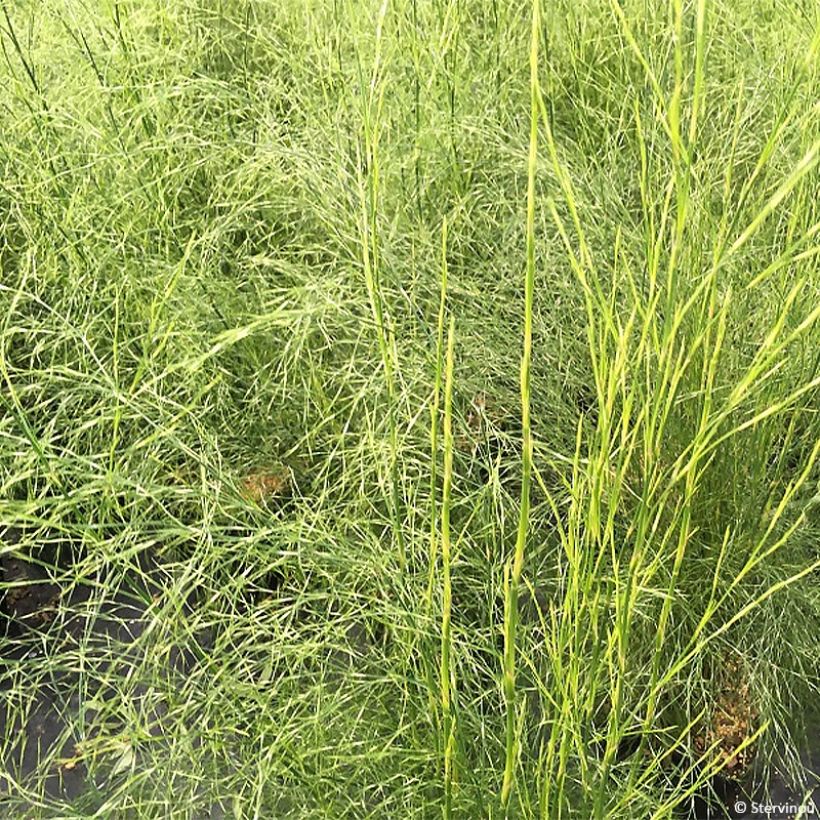

Plant habit
Flowering
Foliage
Botanical data
Calopsis
paniculata
Restionaceae
Paniculate restio
South Africa
Other Restios
View all →Planting and care
Calopsis paniculata should be planted in spring, after the last frost. Install it in soil that is very acidic to slightly acidic, loamy or humiferous, properly drained, and that remains moist even in summer. In regions that experience winter frost, this species should not be planted on a riverbank, as its stump does not tolerate either waterlogged and frozen soil. Choose a very sunny exposure. Protect the stump with a thick protective mulch in winter. This plant is well adapted to coastal areas and mild oceanic climates. It requires no specific maintenance. In pots, make sure the plant never lacks water. From spring to autumn, every 15 days add fertiliser, diluted into the water, for the young plants.
Propagation is done by dividing the clumps in spring.
Planting period
Intended location
Care
This item has not been reviewed yet - be the first to leave a review about it.
Similar products
Haven't found what you were looking for?
Hardiness is the lowest winter temperature a plant can endure without suffering serious damage or even dying. However, hardiness is affected by location (a sheltered area, such as a patio), protection (winter cover) and soil type (hardiness is improved by well-drained soil).

Photo Sharing Terms & Conditions
In order to encourage gardeners to interact and share their experiences, Promesse de fleurs offers various media enabling content to be uploaded onto its Site - in particular via the ‘Photo sharing’ module.
The User agrees to refrain from:
- Posting any content that is illegal, prejudicial, insulting, racist, inciteful to hatred, revisionist, contrary to public decency, that infringes on privacy or on the privacy rights of third parties, in particular the publicity rights of persons and goods, intellectual property rights, or the right to privacy.
- Submitting content on behalf of a third party;
- Impersonate the identity of a third party and/or publish any personal information about a third party;
In general, the User undertakes to refrain from any unethical behaviour.
All Content (in particular text, comments, files, images, photos, videos, creative works, etc.), which may be subject to property or intellectual property rights, image or other private rights, shall remain the property of the User, subject to the limited rights granted by the terms of the licence granted by Promesse de fleurs as stated below. Users are at liberty to publish or not to publish such Content on the Site, notably via the ‘Photo Sharing’ facility, and accept that this Content shall be made public and freely accessible, notably on the Internet.
Users further acknowledge, undertake to have ,and guarantee that they hold all necessary rights and permissions to publish such material on the Site, in particular with regard to the legislation in force pertaining to any privacy, property, intellectual property, image, or contractual rights, or rights of any other nature. By publishing such Content on the Site, Users acknowledge accepting full liability as publishers of the Content within the meaning of the law, and grant Promesse de fleurs, free of charge, an inclusive, worldwide licence for the said Content for the entire duration of its publication, including all reproduction, representation, up/downloading, displaying, performing, transmission, and storage rights.
Users also grant permission for their name to be linked to the Content and accept that this link may not always be made available.
By engaging in posting material, Users consent to their Content becoming automatically accessible on the Internet, in particular on other sites and/or blogs and/or web pages of the Promesse de fleurs site, including in particular social pages and the Promesse de fleurs catalogue.
Users may secure the removal of entrusted content free of charge by issuing a simple request via our contact form.
The flowering period indicated on our website applies to countries and regions located in USDA zone 8 (France, the United Kingdom, Ireland, the Netherlands, etc.)
It will vary according to where you live:
- In zones 9 to 10 (Italy, Spain, Greece, etc.), flowering will occur about 2 to 4 weeks earlier.
- In zones 6 to 7 (Germany, Poland, Slovenia, and lower mountainous regions), flowering will be delayed by 2 to 3 weeks.
- In zone 5 (Central Europe, Scandinavia), blooming will be delayed by 3 to 5 weeks.
In temperate climates, pruning of spring-flowering shrubs (forsythia, spireas, etc.) should be done just after flowering.
Pruning of summer-flowering shrubs (Indian Lilac, Perovskia, etc.) can be done in winter or spring.
In cold regions as well as with frost-sensitive plants, avoid pruning too early when severe frosts may still occur.
The planting period indicated on our website applies to countries and regions located in USDA zone 8 (France, United Kingdom, Ireland, Netherlands).
It will vary according to where you live:
- In Mediterranean zones (Marseille, Madrid, Milan, etc.), autumn and winter are the best planting periods.
- In continental zones (Strasbourg, Munich, Vienna, etc.), delay planting by 2 to 3 weeks in spring and bring it forward by 2 to 4 weeks in autumn.
- In mountainous regions (the Alps, Pyrenees, Carpathians, etc.), it is best to plant in late spring (May-June) or late summer (August-September).
The harvesting period indicated on our website applies to countries and regions in USDA zone 8 (France, England, Ireland, the Netherlands).
In colder areas (Scandinavia, Poland, Austria...) fruit and vegetable harvests are likely to be delayed by 3-4 weeks.
In warmer areas (Italy, Spain, Greece, etc.), harvesting will probably take place earlier, depending on weather conditions.
The sowing periods indicated on our website apply to countries and regions within USDA Zone 8 (France, UK, Ireland, Netherlands).
In colder areas (Scandinavia, Poland, Austria...), delay any outdoor sowing by 3-4 weeks, or sow under glass.
In warmer climes (Italy, Spain, Greece, etc.), bring outdoor sowing forward by a few weeks.































